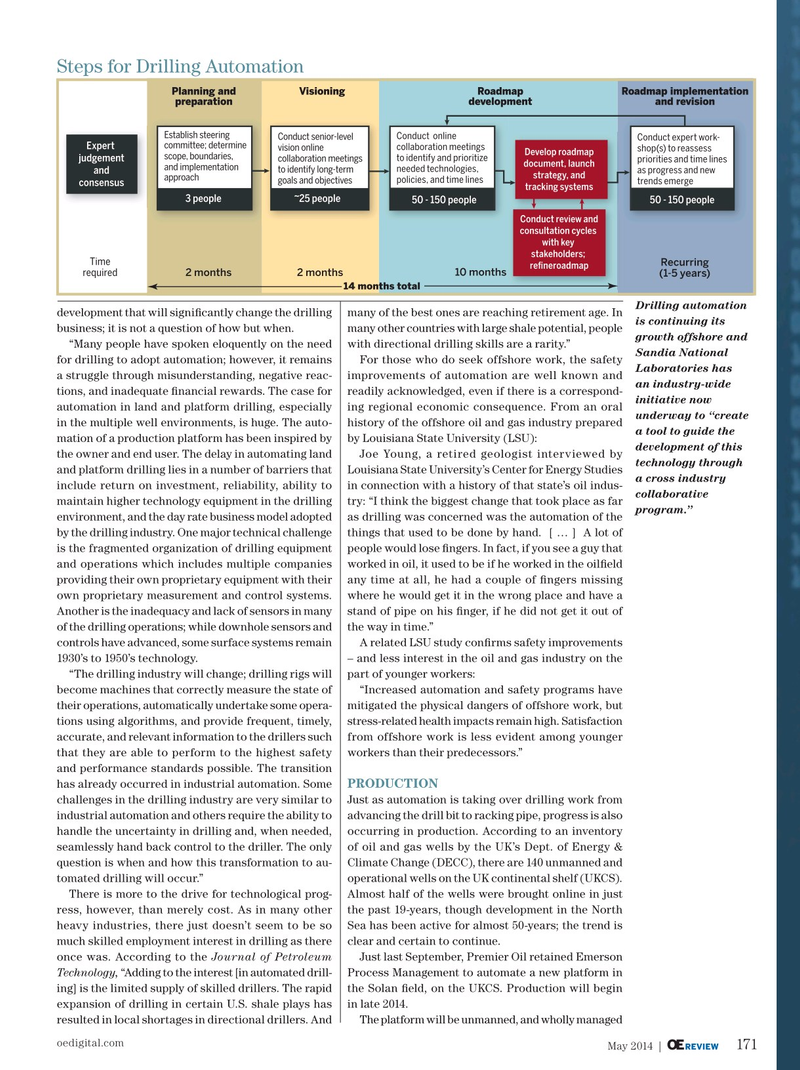
Page 169: of Offshore Engineer Magazine (May/Jun 2014)
Read this page in Pdf, Flash or Html5 edition of May/Jun 2014 Offshore Engineer Magazine
Steps for Drilling Automation
Planning and Visioning Roadmap Roadmap implementation preparation development and revision
Establish steering
Conduct senior-level Conduct online
Conduct expert work- committee; determine
Expert vision online collaboration meetings shop(s) to reassess
Develop roadmap scope, boundaries, judgement collaboration meetings to identify and prioritize priorities and time lines document, launch and implementation to identify long-term needed technologies, as progress and new and strategy, and approach goals and objectives policies, and time lines trends emerge consensus tracking systems 3 people ~25 people 50 - 150 people 50 - 150 people
Conduct review and consultation cycles with key stakeholders;
Time Recurring re?neroadmap 2 months required 2 months 10 months (1-5 years) 14 months total
Drilling automation development that will signi? cantly change the drilling many of the best ones are reaching retirement age. In is continuing its business; it is not a question of how but when. many other countries with large shale potential, people growth offshore and “Many people have spoken eloquently on the need with directional drilling skills are a rarity.”
Sandia National for drilling to adopt automation; however, it remains For those who do seek offshore work, the safety
Laboratories has a struggle through misunderstanding, negative reac- improvements of automation are well known and an industry-wide tions, and inadequate ? nancial rewards. The case for readily acknowledged, even if there is a correspond- initiative now automation in land and platform drilling, especially ing regional economic consequence. From an oral underway to “create in the multiple well environments, is huge. The auto- history of the offshore oil and gas industry prepared a tool to guide the mation of a production platform has been inspired by by Louisiana State University (LSU): development of this the owner and end user. The delay in automating land Joe Young, a retired geologist interviewed by technology through and platform drilling lies in a number of barriers that Louisiana State University’s Center for Energy Studies a cross industry include return on investment, reliability, ability to in connection with a history of that state’s oil indus- collaborative maintain higher technology equipment in the drilling try: “I think the biggest change that took place as far program.” environment, and the day rate business model adopted as drilling was concerned was the automation of the by the drilling industry. One major technical challenge things that used to be done by hand.

 168
168

 170
170